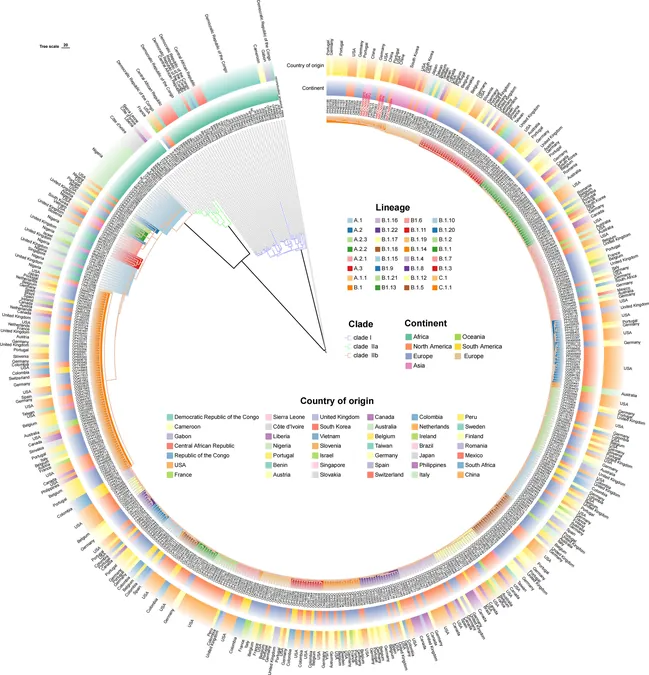
Caution Advised for NSAID Use During Pregnancy: New Study Reveals Hidden Risks
2024-12-23
Author: Mei
Introduction
A recent study from Taiwan has raised alarms regarding the use of nonsteroidal anti-inflammatory drugs (NSAIDs) during pregnancy, revealing that certain NSAIDs pose a significant risk of chronic kidney disease (CKD) for children. This cohort study, published in JAMA Pediatrics, emphasizes the need for healthcare professionals to exercise caution when prescribing these medications to pregnant patients.
Study Overview
The research, led by Dr. Chien-Ning Hsu from Kaohsiung Chang Gung Memorial Hospital, indicates that gestational exposure to NSAIDs overall is associated with a higher risk of childhood CKD, with a weighted hazard ratio (HR) of 1.10. However, that association did diminish when adjusted for genetic and environmental factors within sibling comparisons, landing at a weighted HR of 1.05.
Specific NSAID Risks
The findings are more concerning for certain NSAIDs at specific points during pregnancy. In the first trimester, both indomethacin and ketorolac (Toradol) were linked to increased CKD risk (wHR of 1.69 for indomethacin and 1.28 for ketorolac). The second trimester showed increased risks with diclofenac (wHR 1.27) and mefenamic acid (Ponstel) (wHR 1.29). In the third trimester, ibuprofen became a cause for concern, indicated by a weighted HR of 1.34.
Caution in Prescribing NSAIDs
Despite the overall risk becoming less pronounced when evaluating siblings, the researchers stress the importance of cautious prescribing. "These NSAIDs should only be given after careful consideration of their benefits and risks for both mother and child," Hsu and colleagues stated.
FDA Warnings and Public Health Concerns
Compounding this issue is the fact that while the FDA cautions against the use of NSAIDs after 20 weeks’ gestation due to known fetal nephrotoxicity, the use of these drugs has surged in Western countries. Research shows that approximately 84% of pregnant individuals reported utilizing over-the-counter NSAIDs in the first trimester alone.
Study Methodology and Findings
Taiwan’s unique healthcare system, where most NSAIDs are prescription-only, allowed for a comprehensive analysis of nearly 680,696 singleton births from 2007 to 2017 using data from the Taiwan National Maternal and Child Health Database. Among those studied, around 24% had mothers who used NSAIDs during pregnancy. Notably, the study identified that the average age of mothers using NSAIDs was approximately 31 years.
CKD Risk Tracking
The likelihood of CKD in children was tracked through national healthcare records until the end of 2021, and the diagnosis was determined based on established codes with a rigorous standard. Notably, increased risk was particularly observed during the second and third trimesters, with weighted hazard ratios of 1.19 and 1.12, respectively.
NSAID Usage Patterns
Among the NSAID-using group, a majority reported usage in the early stages of pregnancy, with diclofenac being the most utilized non-aspirin NSAID.
Study Limitations
However, the study had limitations; the analysis relied entirely on prescription records, potentially leading to inaccuracies if actual NSAID consumption differed from what was documented. Furthermore, other influential factors like malnutrition, maternal behaviors such as smoking and alcohol consumption, and varying healthcare systems might impact the generalizability of the results.
Conclusion and Recommendations
The conclusion is clear: significant caution is warranted when considering the use of NSAIDs during pregnancy, especially indomethacin and ketorolac in the first trimester, mefenamic acid and diclofenac in the second, and ibuprofen in the third. Continued research is necessary to explore the additional roles of genetic and environmental factors in kidney development over the course of pregnancy.
Expectant mothers are urged to engage in thorough discussions with their healthcare providers regarding the use of NSAIDs, weighing the potential risks against the benefits for both their health and the health of their children.




 Brasil (PT)
Brasil (PT)
 Canada (EN)
Canada (EN)
 Chile (ES)
Chile (ES)
 España (ES)
España (ES)
 France (FR)
France (FR)
 Hong Kong (EN)
Hong Kong (EN)
 Italia (IT)
Italia (IT)
 日本 (JA)
日本 (JA)
 Magyarország (HU)
Magyarország (HU)
 Norge (NO)
Norge (NO)
 Polska (PL)
Polska (PL)
 Schweiz (DE)
Schweiz (DE)
 Singapore (EN)
Singapore (EN)
 Sverige (SV)
Sverige (SV)
 Suomi (FI)
Suomi (FI)
 Türkiye (TR)
Türkiye (TR)